Changing your saddle height is the most important adjustment you can make to the fit of your bike.
In this guide, we'll explain how to find your correct saddle height on a bicycle, including how to set the fore/aft position of the saddle, as well as tilt.
While this guide focuses on setting the saddle height for a road bike, it applies equally to mountain bikes, hybrids and gravel bikes.
When your saddle is at the right height, and has the correct fore/aft position and tilt, you'll have a comfortable and efficient ride.
You risk saddle discomfort or, worse, injury if they're not. Many of the most common types of pain caused by cycling are linked to incorrect saddle height.
How to set saddle height on a bike
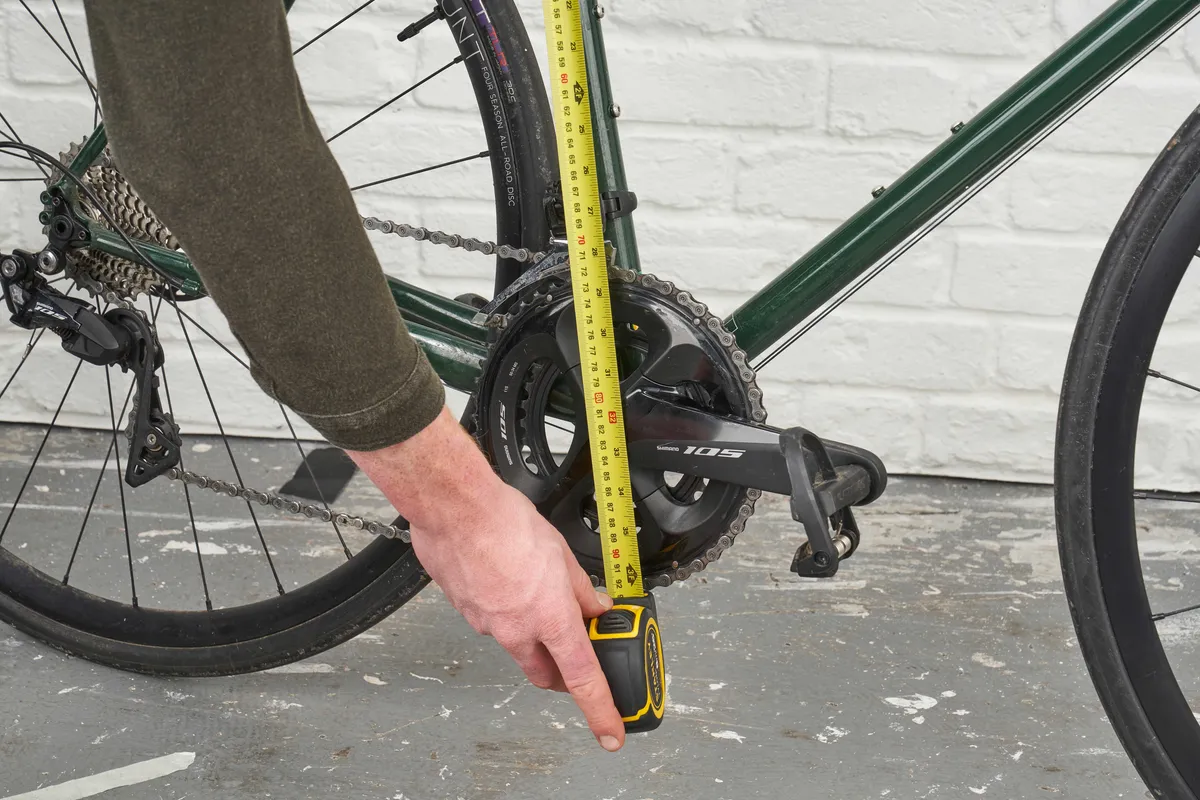
It’s good practice to document your starting position before doing anything. It will come in handy in the future, especially if you find any changes you have made aren’t working for you. With your old position noted, you can go back to your starting point quickly.
In addition to saddle height, you'll also need to consider saddle fore/aft (also known as saddle setback – we've got a separate guide for that) and saddle tilt.
1. How to measure your bike's saddle height
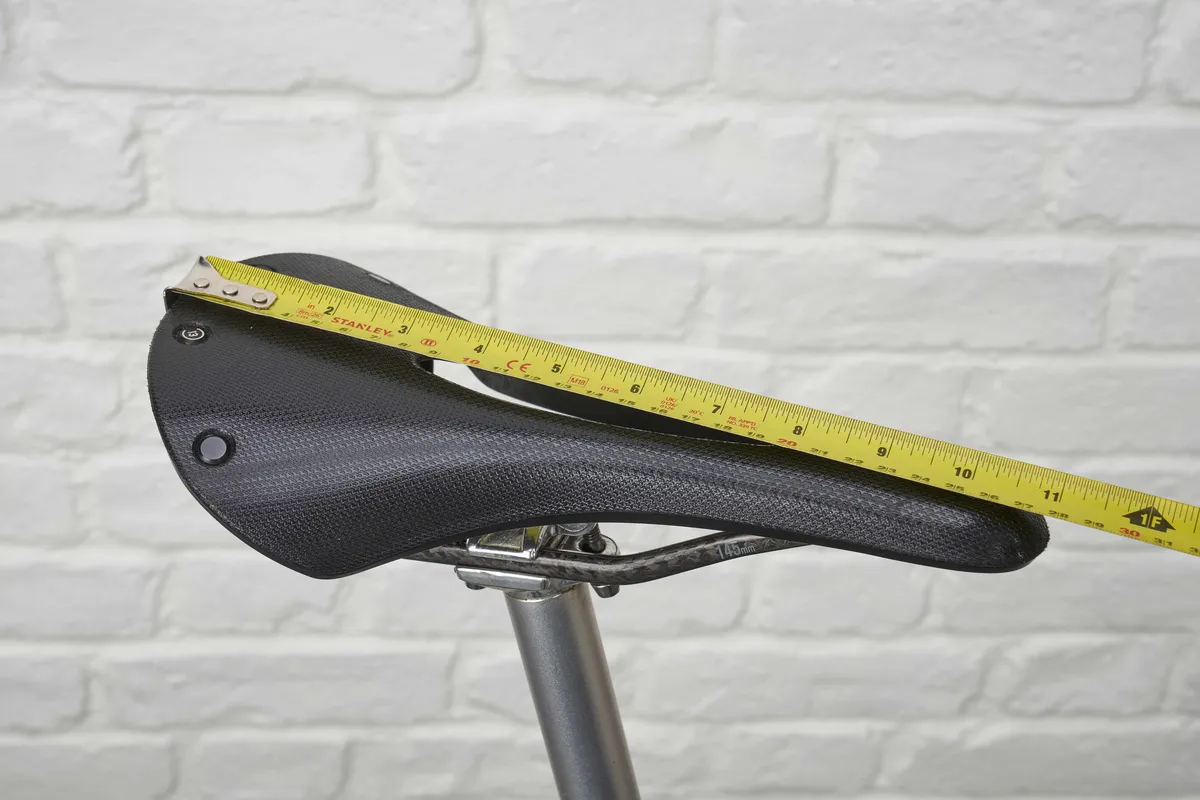
Measure the length of your seat from front to back and find a mid-point. Mark this spot on the saddle.
Use your tape measure to start at the centre-top of your saddle and measure in a straight line to the centre of your bottom bracket.
Record to the nearest millimetre (764mm, for example).
2. How to determine the saddle fore/aft position
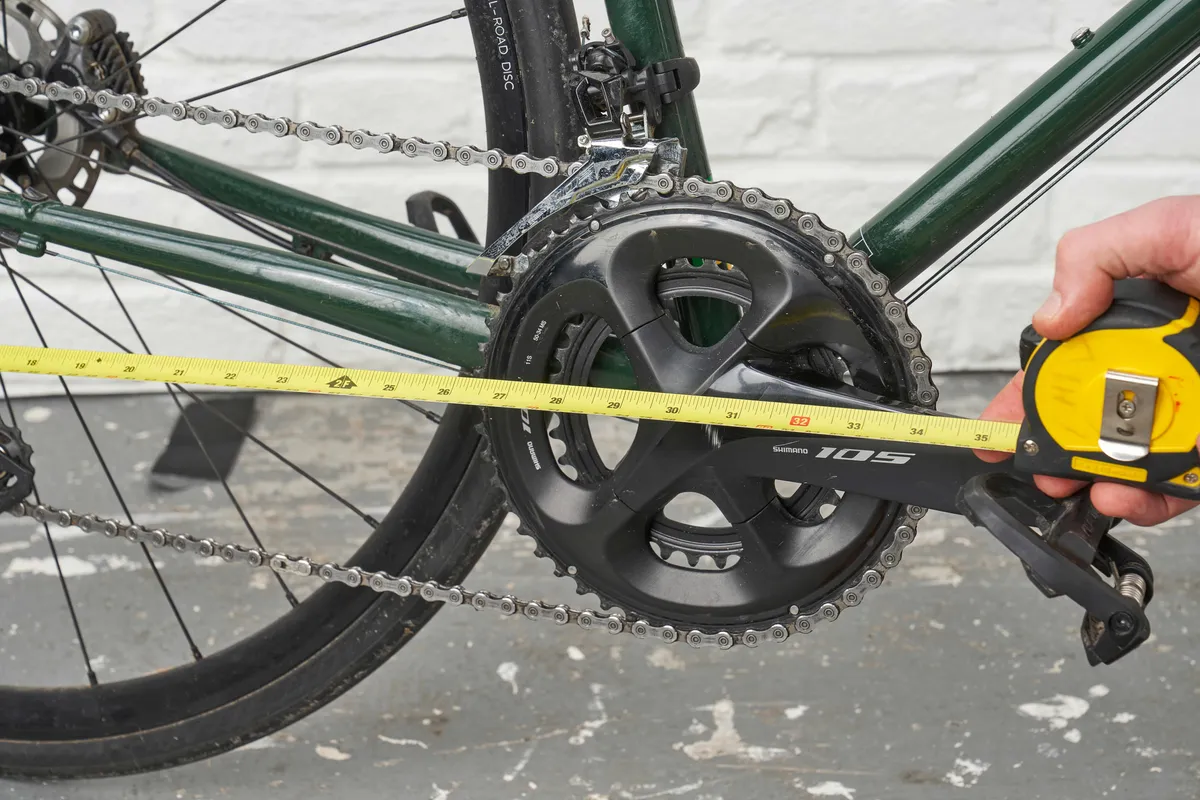
Place your bike against a wall, either in a stationary trainer or with the wheel in. Either way, make sure the bike is vertically perpendicular to the floor and horizontally perpendicular to the wall.
Measure from the wall to the bottom bracket for measurement one.
Measure from the wall to the tip of the saddle for measurement two.
To calculate saddle setback, deduct measurement one from measurement two.
3. How to determine saddle tilt
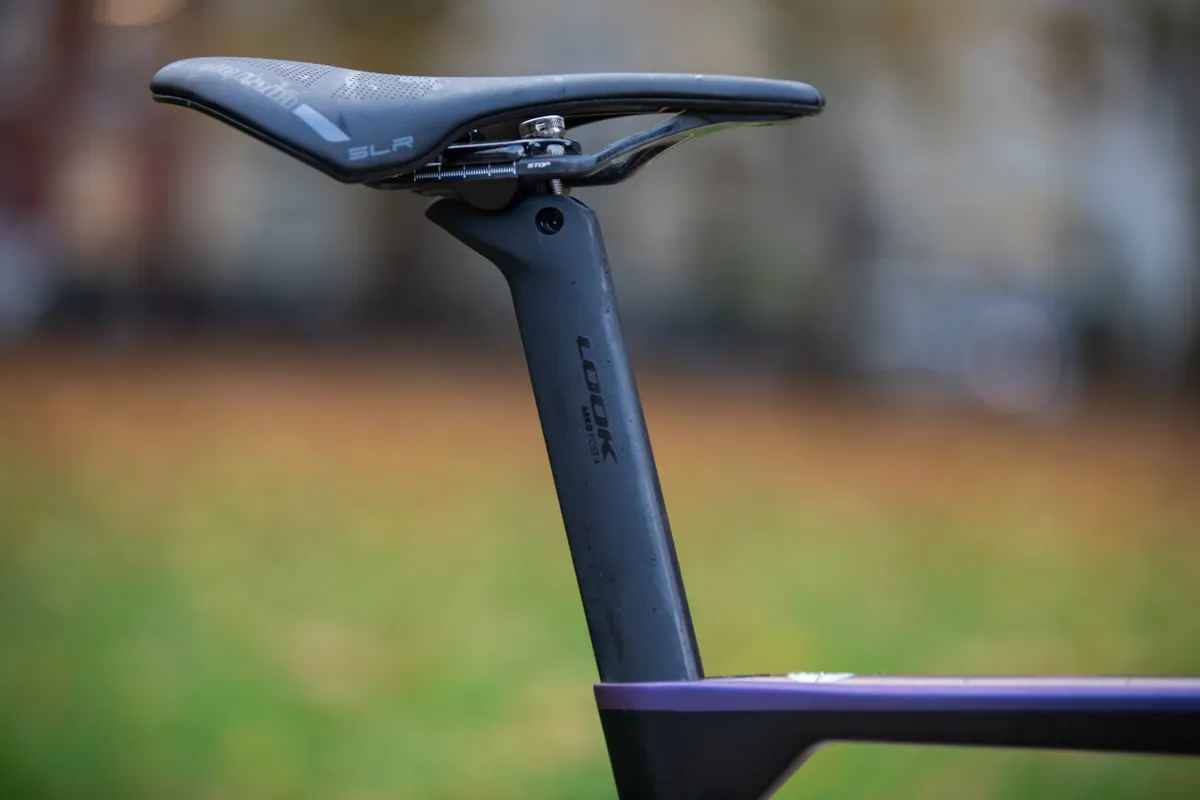
Because many saddles have contours, it's best to measure the overall saddle angle.
Place a piece of board over the seat and use your smartphone or inclinometer to find the overall seat tilt. Measure to the nearest tenth of a degree.
How to get the perfect saddle height on your bike
Once you have your three measurements, it’s time to get started.
Determining saddle height with the heel method
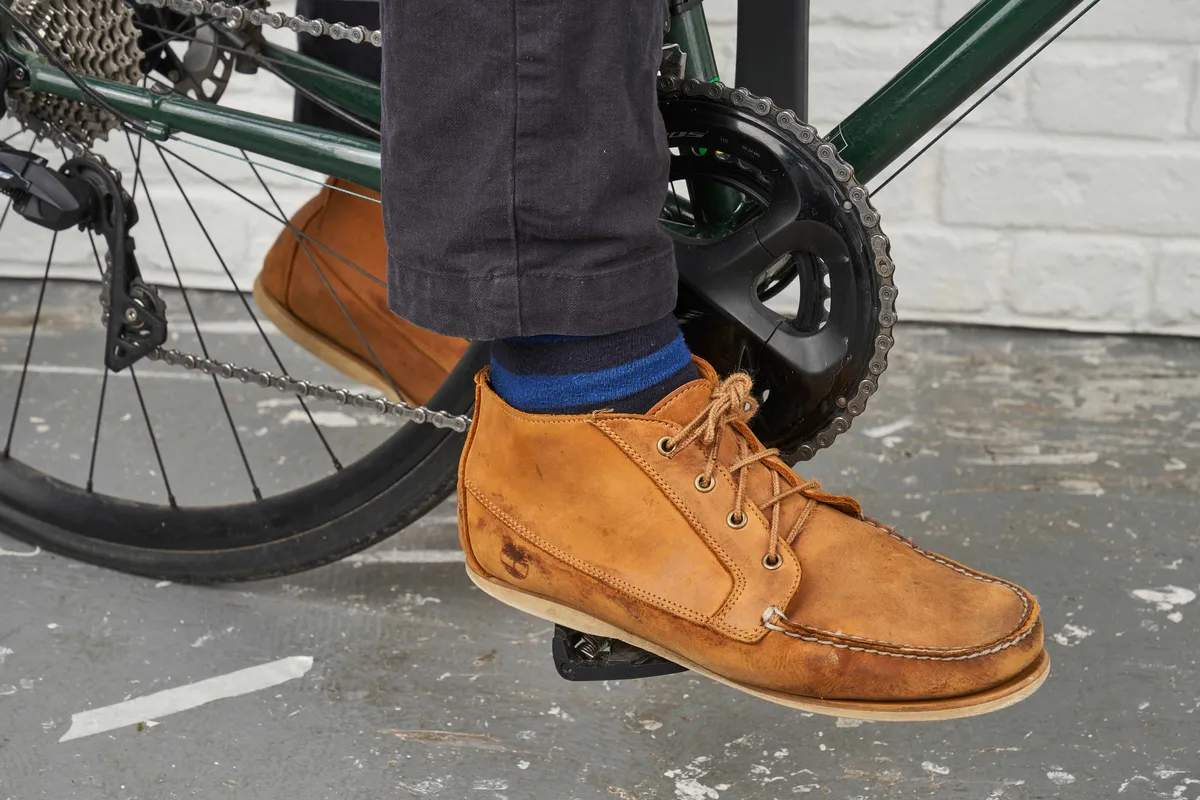
The ‘heel method’ is a very quick way to establish a baseline height for beginners or casual cyclists. This process can be done in a doorway, or better yet with the bike on a stationary trainer.
Hop on the bike and place your heel on the pedal, in the shoes you plan on riding in.
Pedal forwards or backwards slowly. If the saddle is too high, you’ll not be able to pedal smoothly without having to rock your hips from side-to-side or overreaching.
Move your saddle down one to two centimetres at a time until this back-and-forth stops.
Conversely, if you're pedalling smoothly, try going up a few centimetres at a time until you start reaching for the pedals. Then, edge your saddle back down until you don't have to stretch at the bottom of the pedal stroke.
How to use a smartphone camera to determine your saddle height
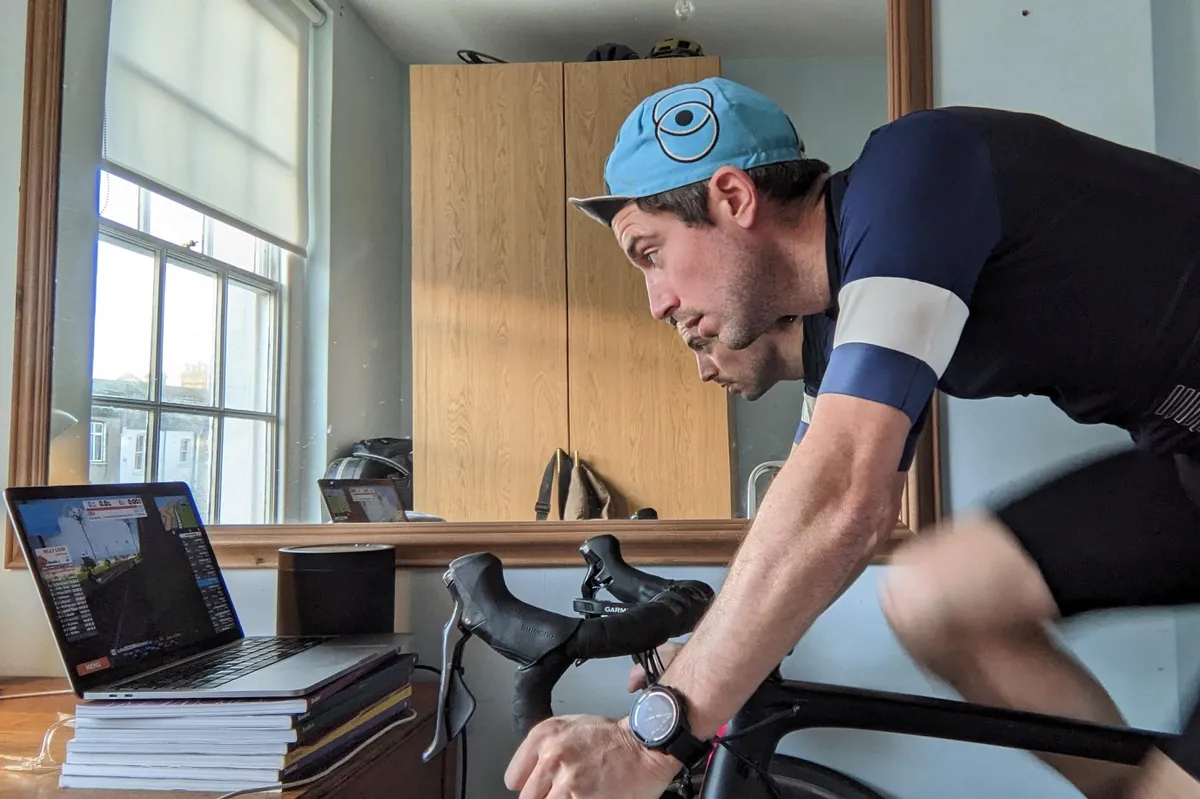
You can use a smartphone camera to determine your saddle height by asking someone to film or take photos of your pedal stroke. The goal is to record how much bend is in your knee.
You can try this method with your bike in a turbo trainer or with one hand against the wall for support.
To start, try putting your foot on the pedal as you would when riding. If this means clipping into clipless pedals, then go for it.
If you prefer to ride with flat pedals, then put about a third of your foot in front of the pedal axle, and two-thirds behind.
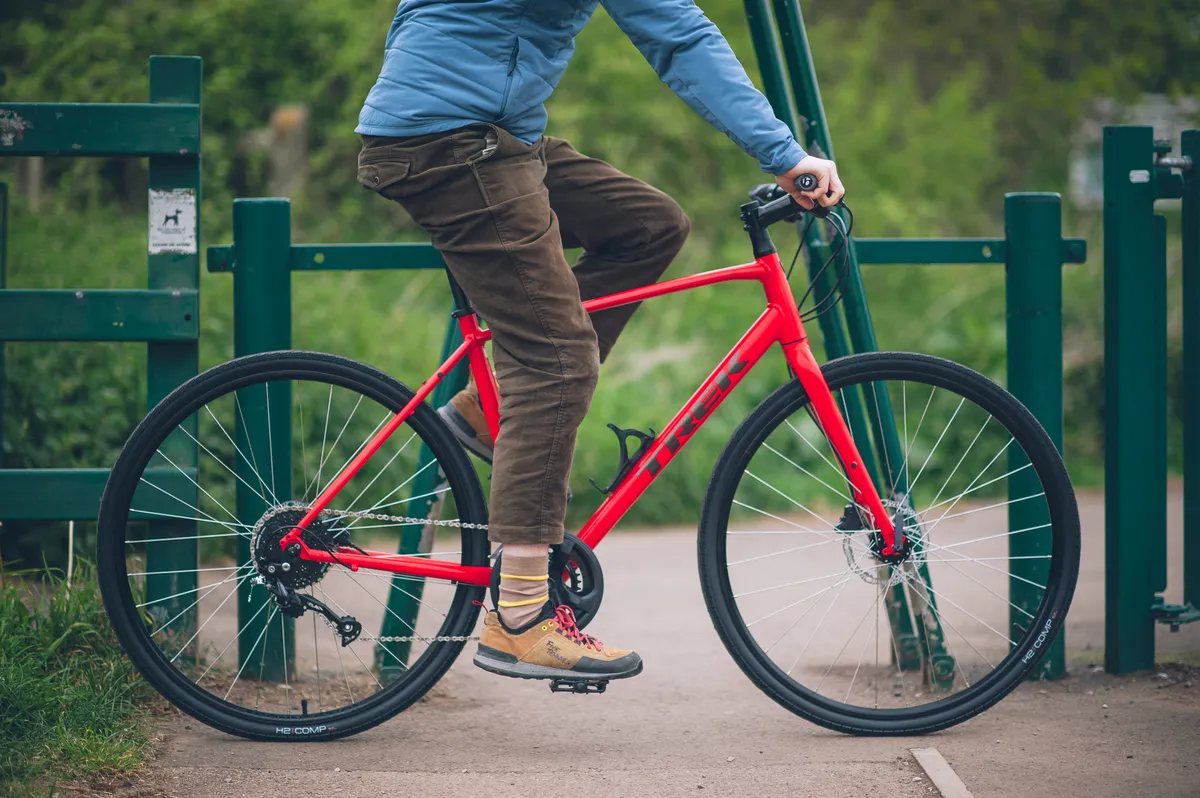
At full extension (which is more like five o'clock than six o’clock), 30 to 40 degrees of knee bend is the generally accepted range.
If the images show your knee at an angle of less than 30 degrees, the seat height is likely a bit low. You may be feeling tension at the front of the knee or a large amount of work only from your quads.
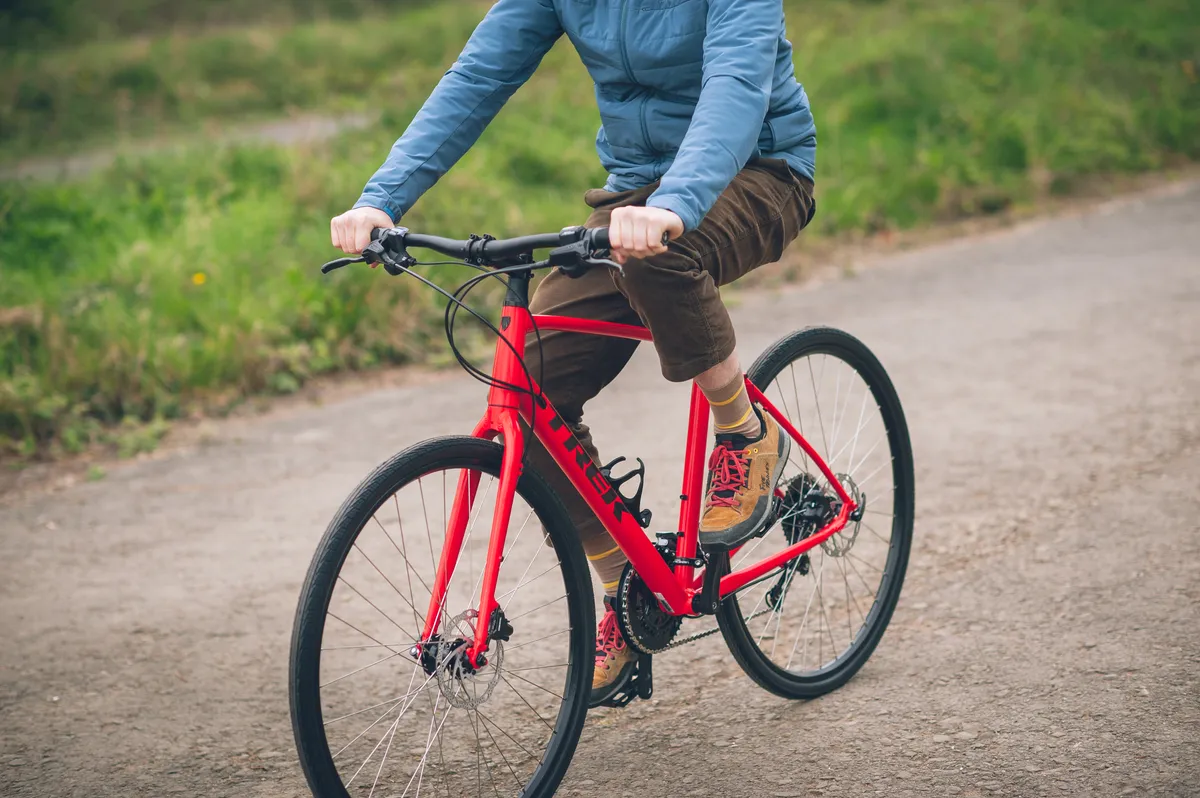
If the images show your knee at an angle greater than 40 degrees, the saddle is likely too high. You may feel a dull ache in your lower back, if so.
Keep adjusting the height of your saddle until you’ve found something that feels smooth and balanced.
Now take your bike out for a few short rides. Bring your hex keys or a multi-tool with you to make on-the-fly adjustments if required.
Using a formula to set saddle height
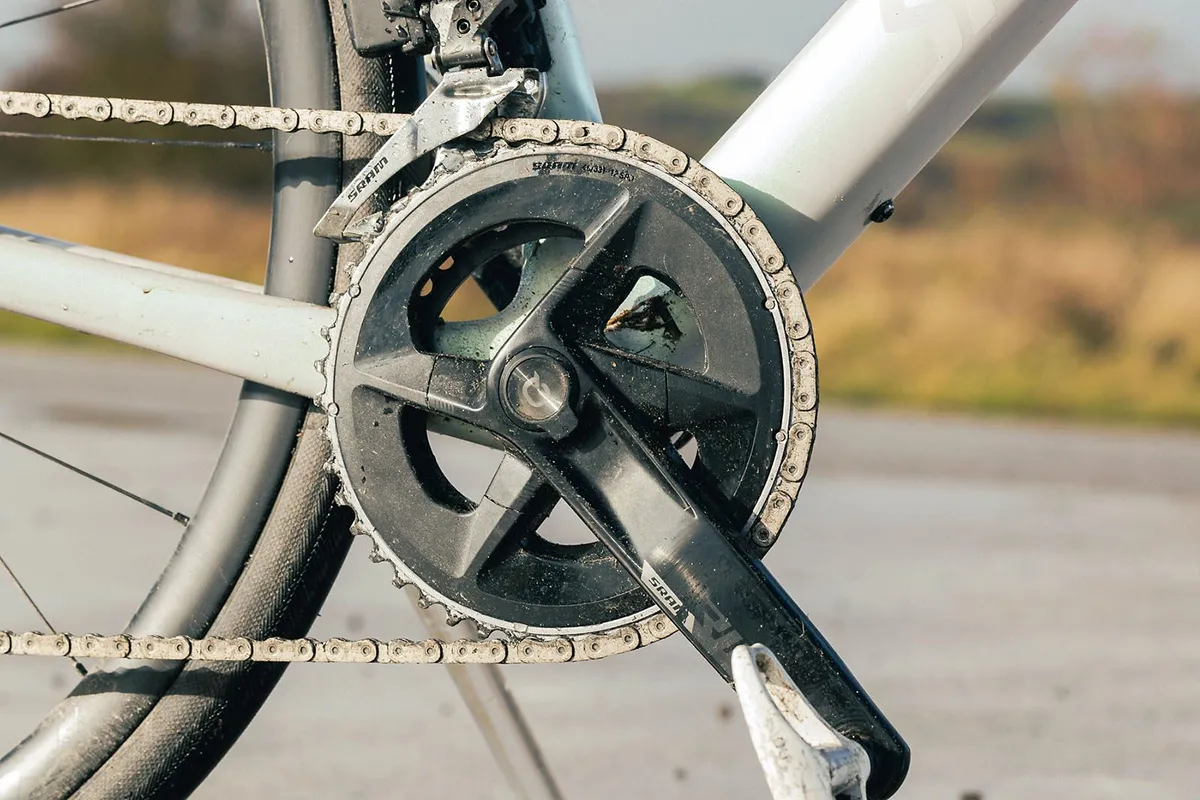
Two formulas are commonly used to find saddle height based on your inseam measurement.
The LeMond Method multiplies your inseam measurement in millimetres by 0.883. This number is the distance between the top of your saddle and your bike's bottom bracket. Therefore, it discounts the length of your cranks.
To use the Hamley Method, multiply your inseam measurement by 1.09. This figure is the distance between the top of your saddle and the pedal axle in the six o'clock position.
How to get the perfect saddle tilt on your bike
Your saddle should properly support your sit bones (ischial tuberosities).
While sitting on your saddle, if you don't feel pressure on the bones at the base of your buttocks, it could be for two reasons:
- Your saddle shape or width doesn't match your anatomical structure
- The tilt of the saddle doesn't enable your sit bones to support you
In the first scenario, you can check for yourself if your bike seat is right for you.
If you have the right one, the saddle tilt, which determines where pressure is applied to the pelvis, might be wrong.
If the front of the seat is too high, it makes it difficult, if not impossible, for the sit bones to provide support.
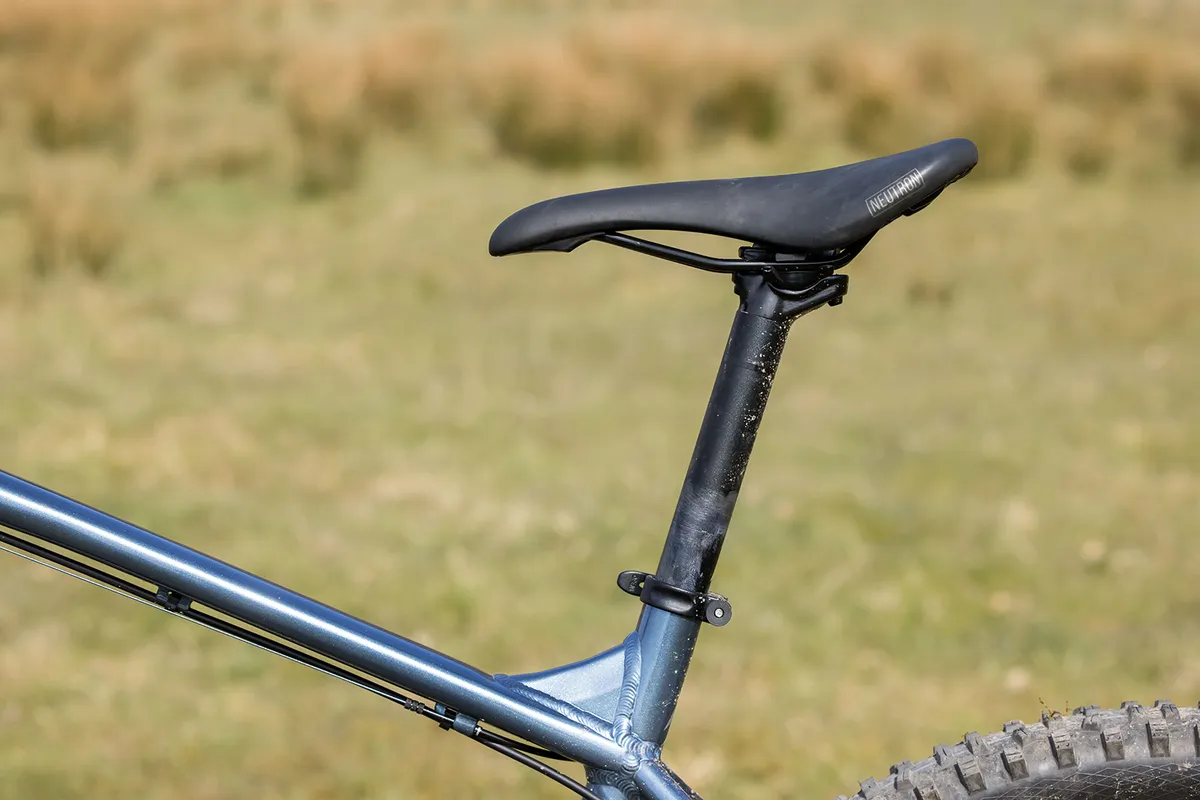
Conversely, if the saddle is too low at the front, your sit bones can support you. But you’ll be sliding forward and subsequently applying too much pressure on your hands.
Use a piece of board and a digital inclinometer (or smartphone level app) to determine saddle tilt. Write it down.
Make sure your bike is level or, if it's not, account for the fact. Now try moving things around to see what best supports your behind.
Most saddles fall into a zero-to-six-degree range.
How do I know my saddle height is correct?
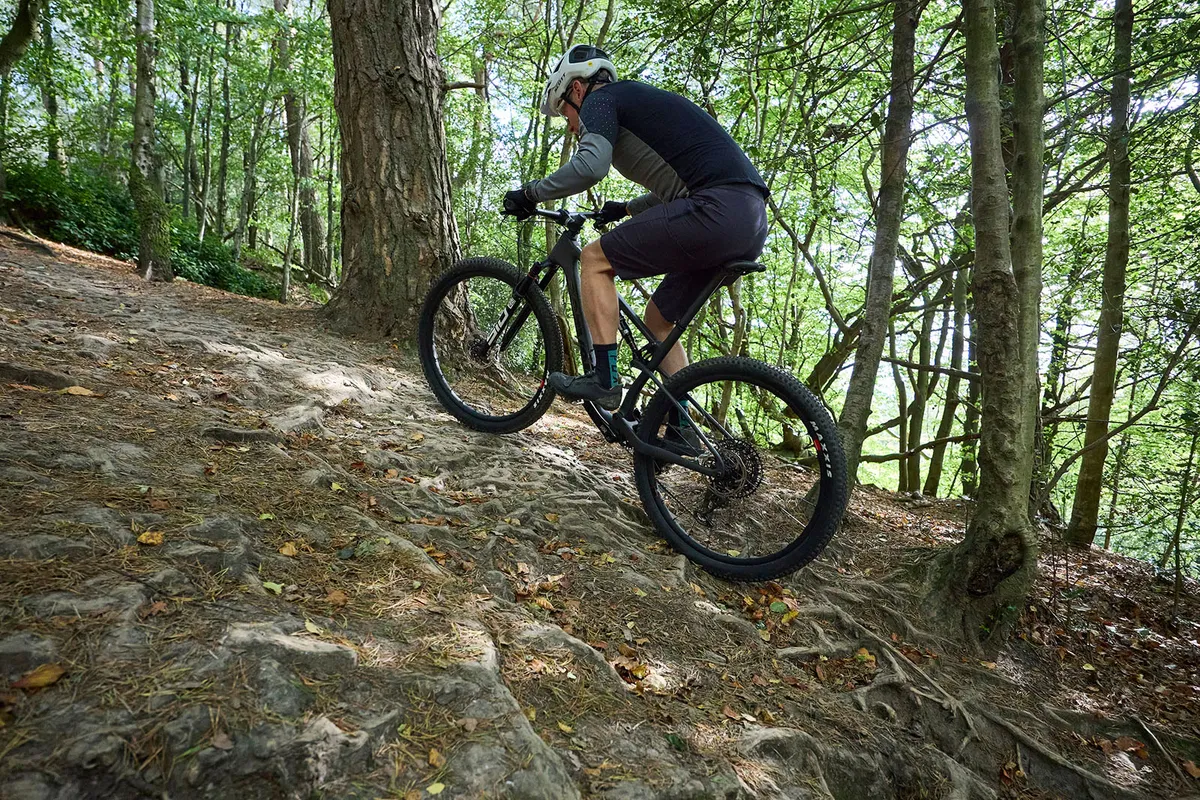
The correct saddle height should result in:
- A level foot where there is no excessive toe down or heel down
- A stable pelvis with no rocking side-to-side when pedalling. If this is happening, it’s likely your saddle is too high
- A consistent saddle position. If a saddle is at the wrong height, riders will often shift back and forward on the saddle
- A smooth pedal stroke, where there isn’t a feeling of losing contact with the pedal at the bottom of the stroke
- Minimal discomfort, particularly in the knee
- An even load on your muscles
If you can’t achieve these results by adjusting the height of your saddle, it might be worth considering whether your handlebar is at the right height or if you have the correct cleat position.




